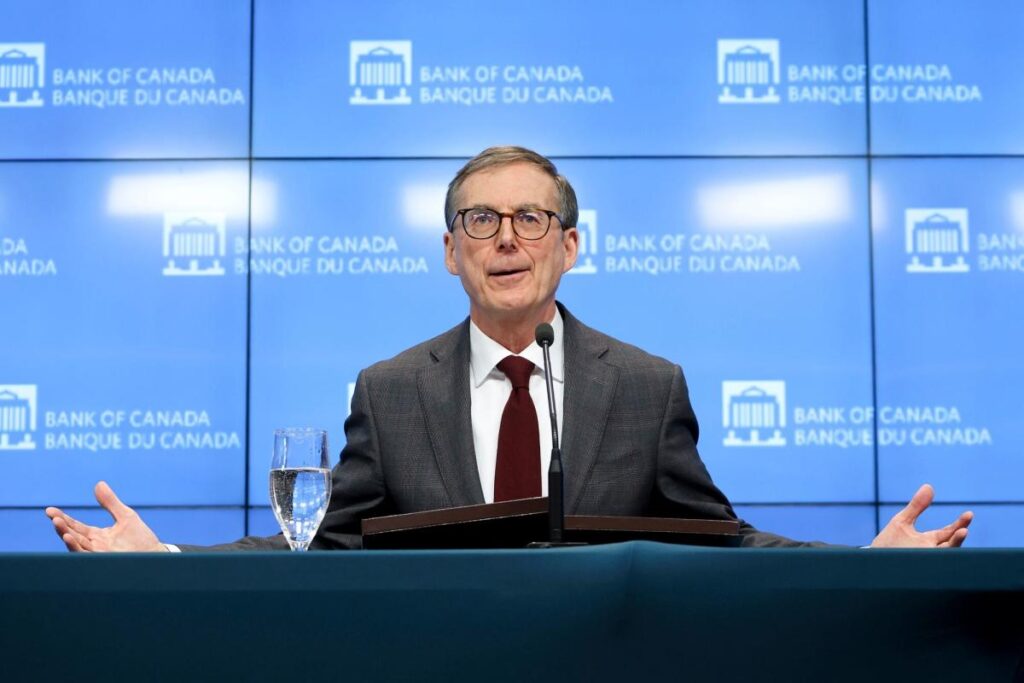
Inflation Eases to 1.9%, Backing Bank of Canada’s Dovish Stance
- Dow, S&P 500, Nasdaq futures sell off as government shutdown looms, Fed’s preferred inflation gauge on deck
- Dow Jumps 800 Points—Best Day In 6 Weeks For Stock Market
- Asian shares are mixed ahead of key US inflation data
- What To Expect From January’s CPI Inflation Report
- This Is Costco’s Secret Weapon Against Inflation
(Bloomberg) — Canadian inflation fell below the central bank’s target for the second time in three months, vindication for policymakers who have cut interest rates aggressively in the second half of this year.
Bạn đang xem: Inflation Eases to 1.9%, Backing Bank of Canada’s Dovish Stance
Most Read from Bloomberg
The consumer price index rose 1.9% on a yearly basis in November, down from a 2% increase a month earlier, Statistics Canada said Tuesday. That’s slower than the median economist estimate of 2% in a Bloomberg survey.
On a monthly basis, the index was unchanged, following a 0.4% jump in October and versus expectations for a 0.1% gain.
November’s inflation print will likely give Bank of Canada officials more confidence that their rapid rate cuts to fuel the economy didn’t derail their efforts to keep price gains at the 2% target. They’re seeking to strengthen economic growth, which has been weaker than forecast, and brace for US President-elect Donald Trump’s potential tariffs on imports from Canada.
Xem thêm : Nigerians hit by record inflation, naira devaluation
Last week, Governor Tiff Macklem and his officials reduced the policy rate by half a percentage point for the second time, making the Bank of Canada one of the most forceful rate-cutters among advanced economies. With the 175 basis-point cut over roughly six months, they have effectively brought rates to a level they believe is no longer clearly restrictive for growth.
But they also signaled they’re ready to slow down their campaign to lower borrowing costs. A setback in underlying price pressures supports a return to more gradual pace of easing next year.
The bank’s two preferred core inflation measures held steady, averaging a 2.65% yearly pace as the October rates were revised upward. But the three-month moving average of these two gauges rose to an annualized pace of 3.3%, from 2.9% previously, according to Bloomberg calculations.
The next rate decision is Jan. 29, when the central bank will also update its economic forecasts.
In November, slower price growth was broad-based, with lower prices for travel tours and easing mortgage interest costs among the biggest contributors to the deceleration.
Black Friday sales that month also contributed to lower prices in furniture, clothing and footwear.
Shelter prices grew 4.6% in November, compared with a 4.8% increase a month earlier. Excluding shelter costs, the headline inflation rose 0.8%, versus 0.9% in October.
Xem thêm : Economic experts pan Hochul’s ‘inflationary’ ‘inflation refunds’: ‘Not difficult math’
Excluding gasoline, the index rose 2%, following a 2.2% gain in October.
Grocery prices remain elevated, however. Prices for food purchased from stores rose 2.6%, down slightly from 2.7% a month prior.
Nguồn: https://estateplanning.baby
Danh mục: News




